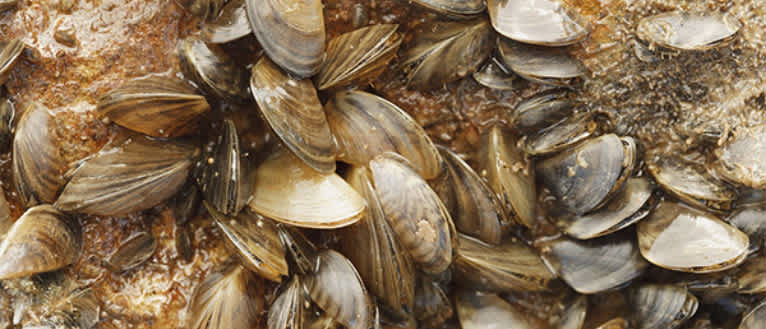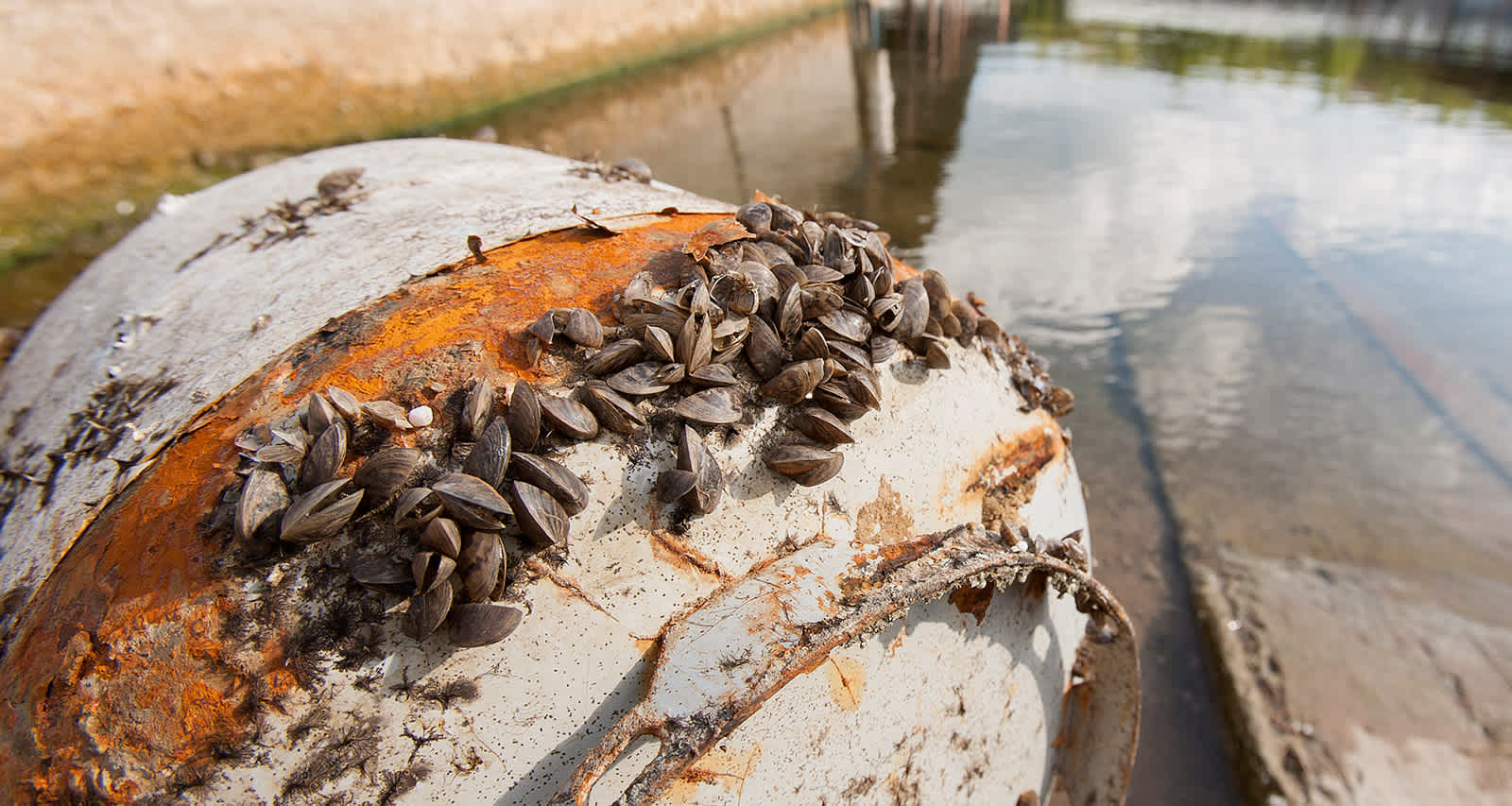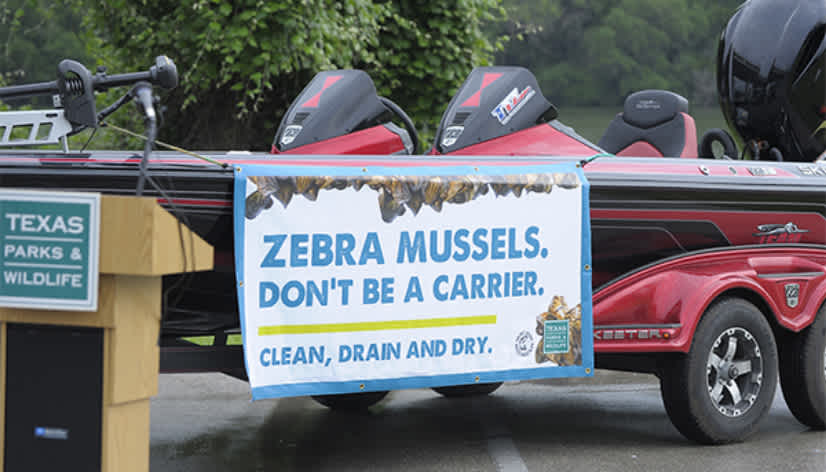Zebra mussels are small (less than one inch) mollusks that are named for the striped pattern on their shell.
Zebra mussels are small (less than one inch) mollusks that are named for the striped pattern on their shell. While they may be small, they are highly invasive and extremely destructive. They multiply rapidly, damaging and clogging water intake structures in lakes and boats. Their shells are also sharp, creating a hazard when they collect on beaches.

The mussels are also harmful to many of our native North Texas aquatic plants and animals. Zebra mussels filter the water by feeding on phytoplankton, zooplankton and algae. This causes other native species to starve and increases water temperatures, which can harm other plants and fish.
While zebra mussels are native to Eastern Europe, they first came to the Great Lakes in North America by ships in 1988, and since that time have been moved around the country by unsuspecting boaters who carried the microscopic veliger larvae from place to place, introducing them to new water bodies. Zebra mussels were first discovered in Texas in 2009 in Lake Texoma, but quickly began spreading to other Texas lakes, including Lewisville and Ray Roberts. As of August 2019, seventeen Texas lakes across five river basins are considered infested, with additional lakes possibly having zebra mussels in them as well.
The main way that zebra mussels are spread is by attaching to the sides of boats and trailers and being carried to another waterbody. Boaters are now REQUIRED BY LAW to clean, drain and dry boats after exiting a lake. Watch this video to learn how easy the process can be to do your part to protect the lakes you love!
Upper Trinity Regional Water District (UTRWD) is part of a coalition of campaign partners, led by Texas Parks and Wildlife Department, to raise awareness of zebra mussels and how to stop their spread between our Texas lakes.

